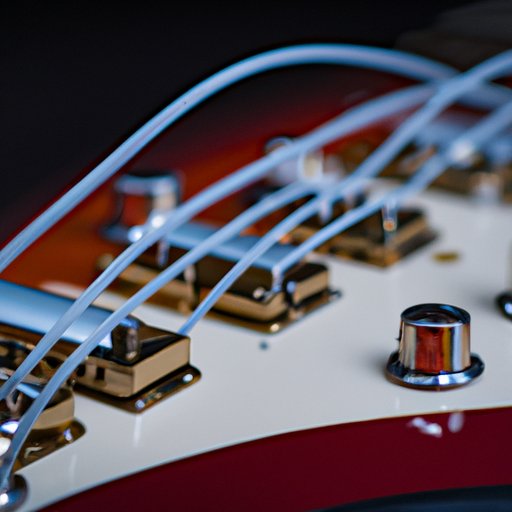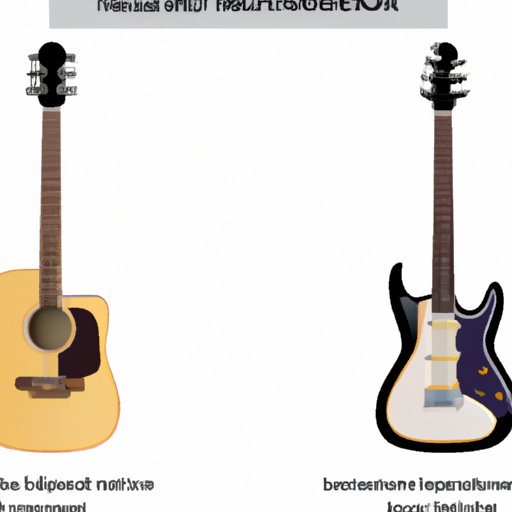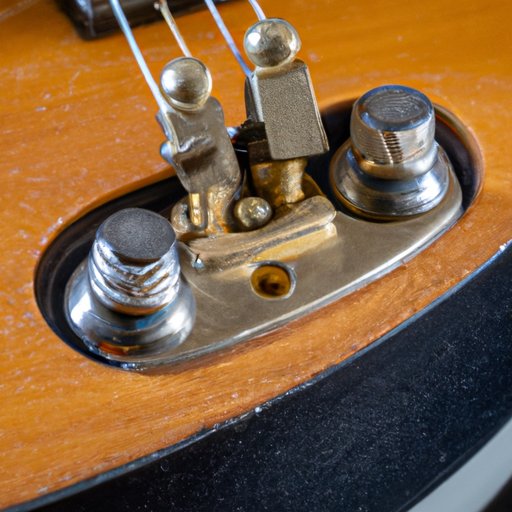Introduction
An electric guitar is a stringed instrument that uses electronic pickups and amplifiers to produce sound. It has six strings and is usually made of wood, though modern guitars may be made from other materials such as carbon fiber or plastic. The purpose of this article is to explore how an electric guitar works and the different techniques used for playing it.

Components of an Electric Guitar
The main components of an electric guitar are the body, neck, strings, and pickups. The body of an electric guitar is usually made of wood and contains the bridge, fretboard, and pickups. The neck is attached to the body and is where the frets are located. The strings are what create the sound when plucked or strummed. Finally, the pickups are what detect the vibration of the strings and convert it into an electrical signal.
How the Components Work Together to Produce Sound
The pickups on an electric guitar detect the vibration of the strings and convert it into an electrical signal. This signal is then sent to an amplifier, which increases the volume so that the sound can be heard. Effects can also be added to the sound, such as distortion or reverb, to create a desired tone. The combination of these components is what produces the sound of an electric guitar.

Techniques for Playing the Electric Guitar
There are several techniques used for playing the electric guitar. Strumming is one of the most common techniques and involves using a pick to rapidly strike the strings. Fingerpicking is another technique in which the fingers are used to pluck individual strings. Sliding is a technique in which the player moves their finger along the fretboard while plucking the strings. Hammering-on and pulling-off is a technique in which the player hammers a finger onto a fret and pulls it off quickly to create a sharp sound.

Comparison Between Acoustic and Electric Guitars
Though both acoustic and electric guitars use strings and pickups to produce sound, there are some key differences between the two types of instruments. Acoustic guitars have a fuller, richer sound compared to electric guitars, which tend to have a brighter, crisper sound. Electric guitars are also generally easier to play due to their lighter strings and thinner necks, making them more suitable for beginners.
History and Development of the Electric Guitar
The electric guitar has a long and interesting history. Early experiments with electrifying the guitar date back to the 1930s, when musicians began experimenting with attaching microphones to the instrument. This led to the development of the first commercially available electric guitar, the Fender Telecaster, in 1951. Since then, the electric guitar has become increasingly popular and has undergone many innovations, such as the addition of effects pedals and multi-stringed guitars.
Conclusion
The electric guitar is a versatile instrument that has been around for decades. Its components work together to produce sound, and there are various techniques used for playing it. Compared to acoustic guitars, electric guitars have a brighter sound and are easier to play. The history and development of the electric guitar is fascinating, and its popularity continues to grow today.
(Note: Is this article not meeting your expectations? Do you have knowledge or insights to share? Unlock new opportunities and expand your reach by joining our authors team. Click Registration to join us and share your expertise with our readers.)
